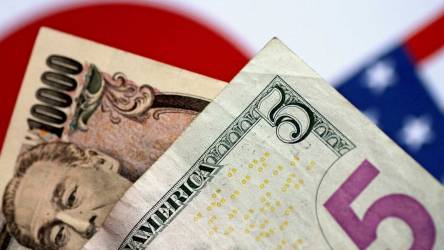USDJPY is on the watch today as the pair is slumping around 1.3%. The move lower is driven by JPY strengthening, which was triggered by a speech from Bank of Japan Governor Ueda. Ueda said that handling of the monetary policy will become even more challenging from the year-end and into next year. While this was a very vague comment, traders seem to take it as a hint that BoJ's policy may get more restrictive soon. Also, there is a feeling in the markets that if Bank of Japan is to start tightening policy, it should do so before other major central banks start cutting rates likely near the middle of next year.
Money markets are now seeing a 35% chance of BoJ delivering a 10 basis point rate hike at its next meeting (December 19, 2023), up from 26% yesterday. The first 10 bp rate hike being fully priced in for April 2024 meeting.
Taking a look at USDJPY chart at D1 interval, we can see that the pair is trading 4.5% below its recent high and is testing the 145.00 support zone. A break below this area would pave the way for a test of 143.70-144.00 zone, where two key technical supports can be found - 200-session moving average (purple line) and lower limit of the Overbalance structure. A drop below this area would hint, at least in theory, at a trend reversal and may herald deeper declines.
 Source: xStation5
Source: xStation5
Three Markets to Watch Next Week (12.12.2025)
Daily summary: SILVER at a new ATH, EURUSD at its highest since October
Turkey has decided to lower the weekly repo rate to 38%
Chart of the day: AUDUSD (11.12.2025)


